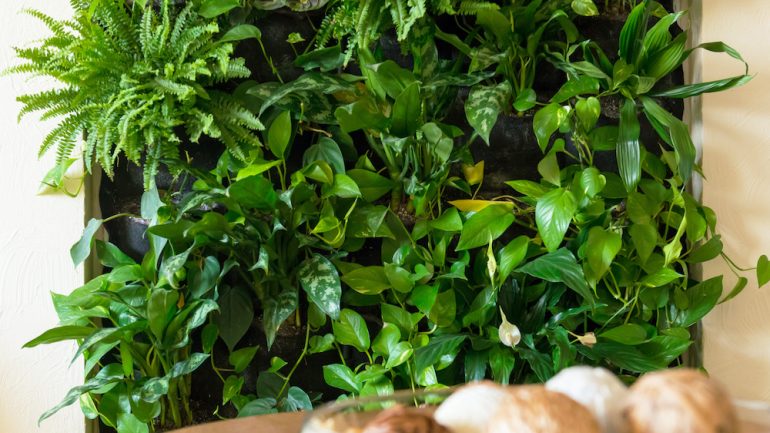A living wall consists of plants hung vertically on a wall instead of on horizontal surfaces like tables, shelves, or the floor. Whether indoors or outdoors, living walls benefit your health and the ecosystem. If you want to include more green living in your home, here’s how to install a living wall.
Where to begin?
If you have an interior or exterior wall you want to disguise or make more attractive, that’s a good place to install your living wall. The side of your house or garage is another good option. Keep in mind that you do not have to cover the entire wall space with plants. If you have a flat roof, you can even think about creating a rooftop garden. Just be sure to account for the additional weight of the plants, any pots, and the soil used as to not overstress the structural integrity of your roof.
How to install a living wall?
Because some plants, such as climbing vines, can damage and impair the structural integrity especially of exterior walls, you might need to attach a trellis to the wall and then affix your plants to that. Plywood or corrugated plastic can also make supportive structures for your wall. Insert the plants into a growing medium and then attach them to the structure. Some green walls use hydroponic plants (those that grow in nutrient solutions) instead.
What plants to choose?
Ensure the plants you choose work well with your climate. Good vine options include rosary vine, string of pearls, and English ivy. Some plants, called tillandsias (air plants), don’t require soil, and you can staple them to a waterproof adhesive backing. For bromeliads (exotic, tropical plants that flower), place soil around the root ball, then surround the soil with moss. Finally, wrap in bird netting and staple onto the wall. Tropical plants tend to work better indoors, while plants based on your climate work better for exterior green walls. Overall, especially for outdoor installations, choose hardy plants that will tolerate changing environments.
How to care for your living wall?
Depending on how they’re constructed, some living green walls are irrigated with a piping system. Without this, your wall will need hand watering. If you purchase your green wall from an installation company, check its maintenance and warranty policies.
How long will it last?
For the most part, plants on a green wall will survive until their roots run out of space to grow and spread. The wall itself, however, could outlast your plants by many years if built properly. Appropriate care is essential to your plants’ longevity and ensuring the aesthetics of your green wall.
Related – Homegrown Flavor: Growing Your Own Herb Garden


